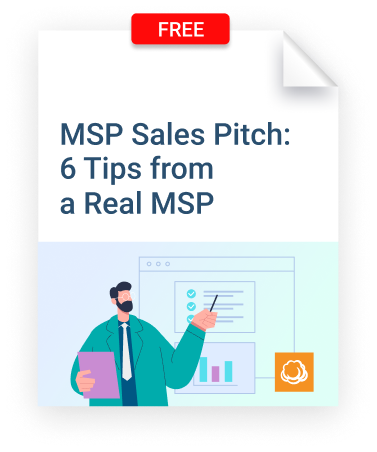While managed service providers continue to embrace multi-channel lead generation and marketing, it turns out they are not particularly keen on cold calling.
According to a Barracuda MSP survey, only 22% stated that they are currently leveraging cold calling as part of their larger marketing framework. And while some companies are seemingly indifferent to this whole strategy, an overwhelming 43% are not even considering it. They won’t be joining the cold-calling bandwagon anytime soon.
Well, you could argue that cold calling isn’t exactly the easiest method of prospecting. Or maybe MSPs are ignoring it because they have yet to invest in telemarketers.
Fair enough. But then again, it just so happens that they are missing out big time.
Research has proven that cold calling is now incredibly rewarding, and capable of generating leads more effectively than ever. Although it takes about 18 dials to get through to a buyer, all that effort ultimately pays off quite handsomely.
Making the connection before your prospects reach out to another MSP boosts your sales chances by 56%. And for the few that manage to beat their competitors as the first vendors to get in touch with the corporate decision-makers, the average conversion ratio is 74%.
So, whichever way you look at it, cold calling is one prospecting strategy you might not want to leave out of your MSP sales plan.
Getting Started With MSP Cold Calling
As you set up a telemarketing team and develop your cold-calling pitches, remember to pay special attention to where the entire process starts. Your conversion odds, at the end of the day, depend significantly on the origin, type, and quality of the prospects.
And so, to help you score with the best possible leads, here are eight high-quality sources you might want to prioritize as you get started with MSP cold calling:
Where to Hunt for Cold-Calling Prospects: 8 Top Lead Sources for MSP Businesses
#1 Search Engine
Let’s start with the largest business registry on the web: Google.
A simple Google search is enough to identify a couple of solid prospects in your target industry. The trick here is to include the target industry and local zip code in the search keywords.
You could, for instance, run a search on “Elementary Schools 206700”. Google will subsequently generate a list of the elementary schools in the area.
#2 Local Chamber of Commerce
Another great source of prospects once you’ve established your target industry is the local chamber of commerce.
Simply prequalify your ideal prospects based on business category and size, then go ahead and search for them in the relevant chamber of commerce.
For the best possible outcome, however, consider joining the club. This will give you the opportunity to mingle, connect, and network with the candidates.
#3 LinkedIn
LinkedIn is a gold mine for professional networks. It’s the one social site where you can randomly reach out to other businesses and executives in your industry.
So, as you gradually expand your LinkedIn connections, you might want to keep an eye out for new leads. The platform itself will even try to offer suggestions on relevant prospects you could add to your professional circle.
Further reading Sell Your Managed Services Effectively with LinkedIn
#4 Global Database
Global Database facilitates B2B lead generation and networking through its specialized business directory. Once you register and log into your account, you get the chance to identify potential lead generation opportunities, as well as businesses you could work with.
The search tool here is even capable of filtering contacts based on multiple parameters, such as nationality, industry, revenue, company size, etc.
In the end, Global Database’s directory will give you all the information you need for cold calling. You’ll have the location, social links, histories, and contact details of not only the target companies but also their corresponding executives.
#5 Market Intelligence Tools and Mailing List Platforms
If you’re looking to build high-quality, hyper-targeted prospect lists, you can go ahead and sample insights from various market intelligence tools and mailing list platforms.
InsideView, for instance, provides an AI-driven lead-targeting tool that qualifies prospects according to custom criteria, such as business connections, demographics, firmographics, location, industry, etc.
ZoomInfo, on the other hand, comes with a solid B2B contact database that works hand-in-hand with its automated intelligence and outreach tools.
Additionally, you could check out DatabaseUSA and InfoUSA. They both offer email list databases that feature most of the prominent businesses in the US.
#6 Local Business Library
Local business libraries can provide the small details you won’t find on national or global business listing sites. While general B2B databases focus on prominent companies, your local business library maintains a more comprehensive index of entities in your area.
Therefore, you can use it to find the smaller prospects you might have missed on other contact databases. A proper library should provide their accompanying location details, as well as email addresses, and telephone numbers.
#7 Local Government Database
Government regulatory agencies ordinarily keep updated registers of all the companies, corporate bodies, and professional organizations that fall within their jurisdiction.
If you’re trying to reach out to small businesses in Texas, for example, you can get a list of all the registered corporations from the Texas Secretary of State.
#8 Professional Registration Groups
Apart from local government agencies, companies are likely to register with professional associations in their industries. Law firms join legal groups, public companies enroll with stock exchange markets, while building contractors tend to join construction licensing authorities.
Such sources, therefore, are particularly suitable when it comes to professional firms and agencies. The registration rolls will always publish, at the very least, each member’s physical address, email, and phone number.
Bonus: Lead Generation Software
All the eight sources we’ve explored so far are pretty reliable. But, let’s face it -- manually searching through all of them can be frustratingly tiresome.
So, while you repeatedly hunt for prospects on the platforms, it would also be a good idea to supplement your efforts with specialized lead-generation software.
The kicker, however, is that choosing a suitable one could take time. For starters, the web alone offers MSPs an overwhelming range of solutions -- from onsite targeting tools to automated omnichannel platforms that combine lead generation with email marketing, CRM, and social media marketing.
All in all, though, these two extraordinary options have proven to be outstanding in MSP prospecting:
- Hunter: Hunter is particularly handy in finding your leads’ email addresses. The tool itself comes in the form of a browser extension for Google Chrome. It proceeds to find all the potential email addresses associated with each individual domain, after which it publishes all the info in a Google spreadsheet.
- Leadfeeder: Leadfeeder, on the other hand, gives you the power to qualify and hunt down prospects after they visit your site. It keeps tabs on each visitor’s surfing behaviors, pages of interest, plus much more. Then, using a special tracking script, it goes ahead and establishes the respective companies that the visitors work for. What’s more, you even get the contact details of other company employees.
Further reading Hunters vs. Farmers: Guide to MSP Sales Personas
Conclusion
With these business resources and tools, you can now begin identifying and qualifying the most promising leads.
Don’t rush through all this, though. Take your time to gather as much information as possible, and then use the insights to develop impactful cold-calling scripts. The content should resonate well with your audiences.







